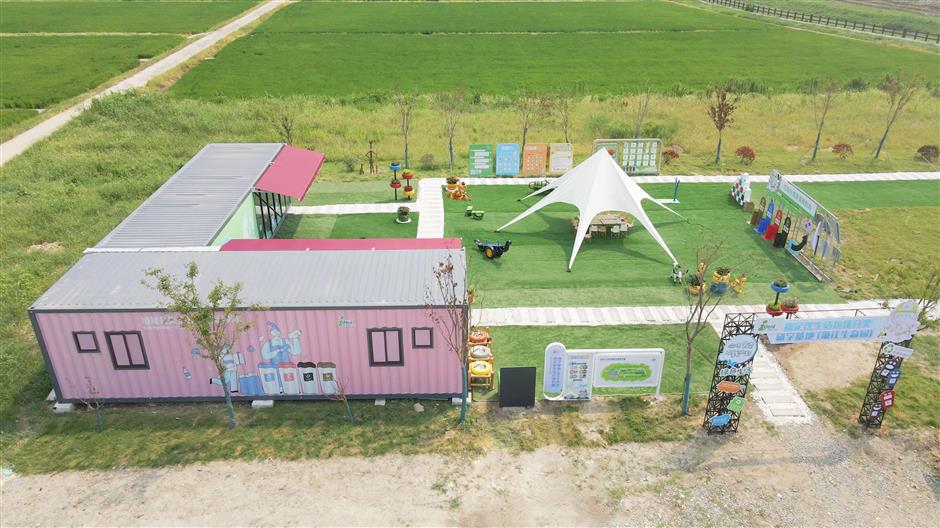
Lijiang Ecological Garden.
Do you know where the trash we sort out goes and how recyclable waste is handled?
A waste sorting science popularization experience route in Jiading District was released on Wednesday as part of the Shanghai Greenery and Public Sanitation Bureau’s campaign to raise awareness of trash classification across the city.
The route includes six spots, including three waste terminal disposal sites – the Jiading Wet Garbage Recycling Plant, Jiading Renewable Energy Utilization Center, and Jiading Construction Waste Recycling Plant – as well as Qingyue Bay Waste Sorting Theme Park, Lijiang Ecological Garden and Jiading District Garbage Classification Science Popularization Base at TES-AMM Corporation (China) Ltd.
The Qingyue Bay park features interactive devices and has a clean energy power generation wall where visitors can experience the waste-to-energy power generation process.
 Ti Gong
Ti Gong
Qingyue Bay Waste Sorting Theme Park.
The park encourages people to participate in environmental protection activities through fun games.
The outdoor space fully embodies the concept of public participation in waste sorting. Around the circular walkway, visitors will find a number of interactive installations as well as camera and panda-shaped sculptures made from old air conditioner filter screens, trees made from old PVC pipes and plates, and flower pots, cars, and seesaws made from old tires.
Tables and chairs transformed from old water pipes, wooden boards, and steel plates are placed in various parts of the park for use.
The garbage sorting study base located within Lijiang Ecological Garden has hosted study courses that integrate hands-on activities, visits, and games, allowing participants to explore garbage sorting knowledge in immersive activities and enhance the concept of green development and low-carbon living.
 Ti Gong
Ti Gong
Lijiang Ecological Garden.
At TES-AMM Corporation (China) Ltd, a subsidiary of the Singapore TES Group, people can check how to dismantle e-waste, separate harmful substances, and process components such as printed circuit boards, chips, connectors, capacitors, and resistors through mechanical and chemical methods.
Metals are refined into copper, tin, and precious metals like gold, silver, platinum, and palladium. Lithium and cobalt from batteries are also reclaimed.
Jiading District has been deeply engaged in the recycling and disposal of waste at the terminal.
The Jiading District Renewable Energy Center not only incinerates domestic waste but also generates green electricity. With a daily waste processing capacity of 1,500 tons, it can achieve an online electricity generation of about 200 million kilowatt-hours, accounting for approximately 15 percent of the total residential electricity consumption in the district.
Volvo and TES-AMM shared their practice on green and low-carbon development during the launch.
“In Jiading known for its industrial advantages, foreign-funded enterprises have been playing an active role in trash sorting, and the district also has strong strength in trash handling in the terminal,” said Zhu Jin, director of the civilization department of the bureau.
 Ti Gong
Ti Gong
A trash sorting science popularization pavilion in Jiading.
